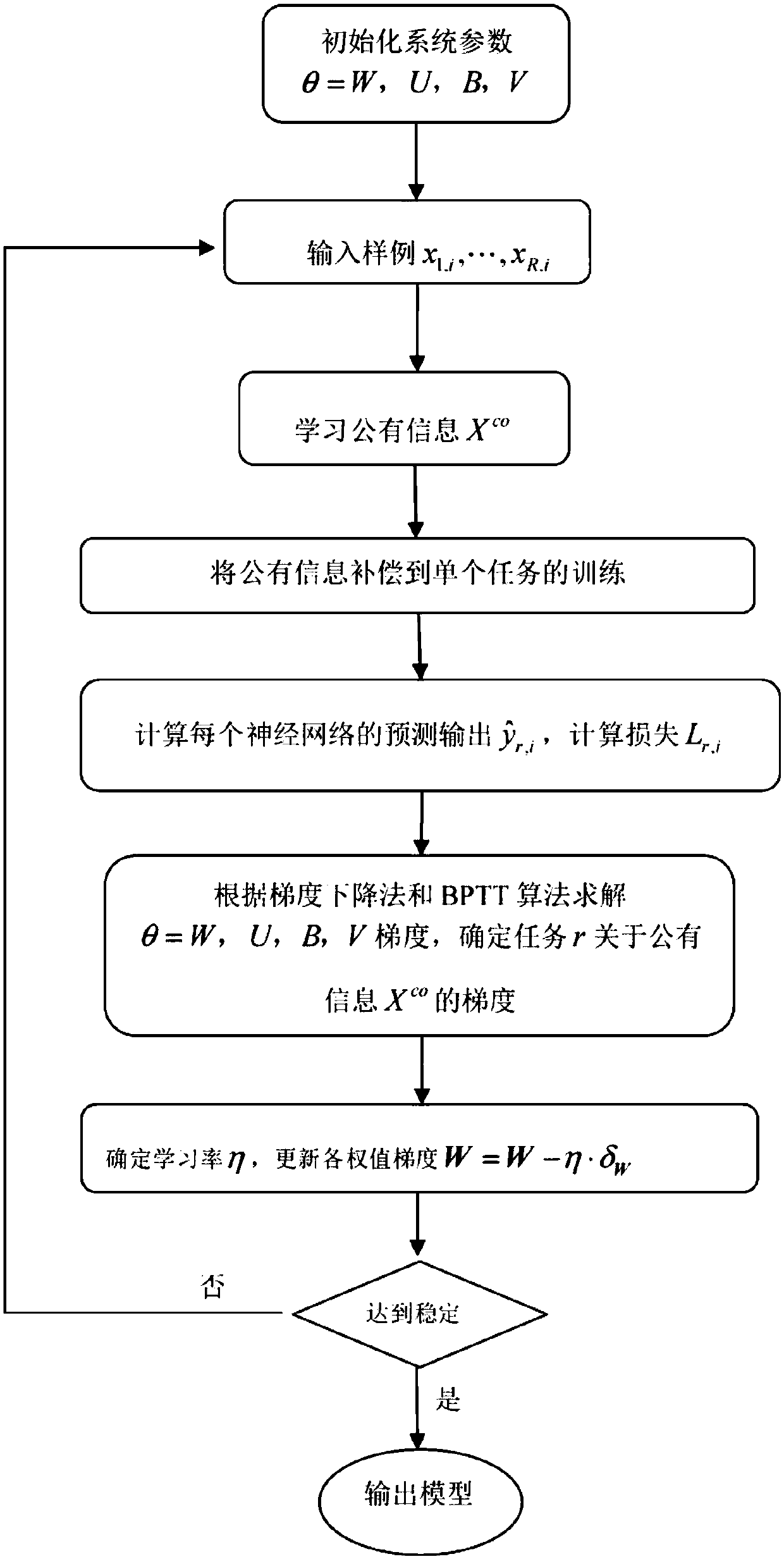RNN-based multi-task learning method
A multi-task learning and task technology, applied in the field of RNN-based multi-task learning, can solve problems such as gradient disappearance and complex structure, and achieve the effect of solving gradient disappearance and realizing information sharing.
- Summary
- Abstract
- Description
- Claims
- Application Information
AI Technical Summary
Problems solved by technology
Method used
Image
Examples
Embodiment Construction
[0024] In order to make the technical solution of the present invention clearer and clearer, the following will be further described in detail with reference to the accompanying drawings. It should be understood that the specific embodiments described here are only used to explain the present invention, and are not intended to limit the present invention.
[0025] figure 2 It is a schematic diagram of generating a predicted label vector during RNN multi-task learning based on public feature compensation in the present invention, and the specific method is as follows:
[0026] definition For the samples under each task, where N r Indicates the number of samples in the sample, M r Indicates the dimensionality of the sample. We assume the same number of samples for each task, N r Represented by N. Therefore, a sample representation of the different views in each task is as follows
[0027]
[0028] We divide the sample into two parts, one with labeled N l samples for ...
PUM
 Login to View More
Login to View More Abstract
Description
Claims
Application Information
 Login to View More
Login to View More - R&D
- Intellectual Property
- Life Sciences
- Materials
- Tech Scout
- Unparalleled Data Quality
- Higher Quality Content
- 60% Fewer Hallucinations
Browse by: Latest US Patents, China's latest patents, Technical Efficacy Thesaurus, Application Domain, Technology Topic, Popular Technical Reports.
© 2025 PatSnap. All rights reserved.Legal|Privacy policy|Modern Slavery Act Transparency Statement|Sitemap|About US| Contact US: help@patsnap.com



